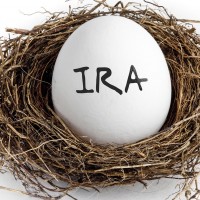A Fact Sheet for 401(k) Retirement Plans
- Details
- Written by Remar Sutton
- Category: Articles

According to the IRS, the most popular defined-contribution retirement plans sponsored by employers are the 401(k) Plans. They take their name from the section of the IRS tax code that authorized them.
A 401(k) plan is not an investment but a protective shell in which specific investments such as mutual funds, annuities or company stock options may be held.
How Do 401(k) Plans Work?
In 401(k) plans, eligible employees may make contributions to their individual accounts which are deducted from their paychecks before taxes. In many plans, employers also make certain "matching" contributions as specified in plan documents, but they are not required to do so. Tax law sets the maximum contribution an individual may make annually. In 2018 an individual may contribute up to $18,500. Individuals over age 50, if permitted by the plan, are allowed an additional $6,000 for a total of $24,500. These amounts may be increased in future years for cost-of-living adjustments.
Taxes on contributions and earnings in the account are deferred until distributions from the account are taken. Because the plans are intended for retirement savings, withdrawals before age 59 ½ (or age 55 in qualifying cases of early retirement) incur a 10% penalty in addition to taxes owed. However, the vested amount you have in the account is portable if you leave the employ of the sponsoring company; typically, you may roll these funds over into your new employer's 401(k) or into an appropriate IRA. In some cases, you may leave the funds in the old plan but you can no longer make contributions to it.
Although you may begin to take penalty-free distributions from a 401(k) at age 59 ½ , you are not required to begin taking distributions until you reach age 70 ½. If you continue to work for the company beyond age 70 ½, you may be able to delay distributions until you retire.
How Are 401(k) Plans Organized?
Although all 401(k) plans must operate within various federal guidelines and have basic similarities, every plan is not alike. Each employer sponsoring a plan for company employees has considerable flexibility to set certain criteria and to determine what investment options are available within their specific 401(k). If you currently participate in a 401(k) or are considering participating, you should be familiar with some basics about 401(k)s and should check out certain facts about your plan.
The summary plan description (SPD) and the plan document. The Employee Retirement Income Security Act (ERISA) requires that
- who is eligible to participate and when they become eligible
- the level of employee contributions permitted
- the company's matching or discretionary contribution
- the vesting period—how long an employee must belong to the plan to receive part or all of the company contributed benefits (Employee contributions vest immediately.)
- other rules of the plan
- what investment options are available
The SPD summarizes the detailed, legal description of the plan, called the plan document. The plan document describes the plan and benefit structure, names who is responsible for running the plan (the fiduciary or fiduciaries), and establishes how the plan will be run. Because the plan document is typically complex and written in legalese, the law requires that all employees receive an SPD. Although companies are supposed to keep their SPDs updated, not all do so in a timely manner. So make sure that you ask if there have been any changes or modifications to the 401(k) plan, before you enroll and from time to time.
Plan sponsor. The plan sponsor is the employer. The sponsor typically decides to establish a 401(k) plan, determines the benefits and other features of the plan, and typically hires individuals or third-party independent service providers to operate and administrate the plan.
Plan fiduciaries. These are the individuals or entities (such as an administrative committee or board of directors) responsible for operating the plan. Although the various individuals with fiduciary responsibility may work for the company or be independent service providers hired by the company, their legal responsibility is to act solely for the benefit of plan participants and their beneficiaries. Typical plan fiduciaries include the plan administrator(s), the trustees, the record keeper, and the investment manager.
What Are the Investments Options within a 401(k)? What Control Do You Have over Them?
A 401(k) plan is not an investment but a protective shell in which specific investments such as mutual funds, annuities or company stock options may be held. One of the characteristics of most 401(k) plans is that the investment options available in an individual 401(k) plan were selected by the plan's fiduciary investment managers or agents. The average number of investment options offered is 19, according to the most recent survey (60th annual) from the Plan Sponsor Council of America (PSCA).
The types of investments offered typically include several kinds of mutual funds such as:
- Actively managed stock equity funds, both U.S. and international
- Balanced funds that include both stocks and bonds
- Index stock funds
- Bond funds
- Money market funds
Other options for 401(k) plans may include company stock. Some plans may even allow "self-directed" brokerage accounts that allow you to select stocks, bonds or mutual funds from the wider market place.
Although the plan selects the investment options, the employee has the responsibility of allocating his or her account among the options. Financial planning experts recommend not placing one's holdings all in one investment but diversifying to spread the risk. The experts also recommend checking out the investment options in the fund just as you would if you were investing for yourself in an independent portfolio.
What Are Some of the Potential Benefits of Participating in a 401(k) Plan?
Potential tax savings. Your contributions are deducted from your paycheck before taxes are taken out. You pay no taxes on the accumulated contributions and earnings until you withdraw them—hopefully in retirement, when you may be in a lower tax bracket.
Employer contributions. If the plan documentation permits, the employer can make contributions including matching contributions. You only get these contributions if you participate in the plan. You don't pay income tax on the employer contributions until you withdraw the funds.
Portability and rollover. Should you leave the employ of the company for any reason before retirement, you can take the money (including any vested company contributions) with you. You can take it in a lump sum or directly roll the money over into a new employer's 401(k) or into an individual IRA. If you are younger than 59 ½ you will need to roll the money over directly into another qualified retirement savings plan (not take a lump sum and open an account) or you will incur penalties.
Choice and control of investments. Within the offerings of the plan, you control where you invest the money. That enables you to match risk and investment strategies to your needs and goals.
Loan options. Some 401(k) plans allow you to borrow money from the account. You pay the loan back with interest to yourself. Such a loan doesn't incur taxes or penalties if it meets guidelines, but there are loan limits and rules. There are also circumstances, defined by the plan document, when you could have to play the loan back in full.
Requires only small contributions. You can participate in a 401(k) for a very modest monthly contribution.
What Are Roth 401(k) Plans?
First, these are not separate plans. Instead, according to the IRS, "designated Roth contributions are a new type of contribution that new or existing 401(k) plans can accept." Roth contributions to a 401(k) plan are made with post-tax dollars and later growth in principal and distributions is tax-free. Employees may designate some or all of their contributions as Roth contributions. You can make both Roth contributions and traditional pre-tax contributions, but the maximum contributions combined cannot exceed the limits for a 401(k)—in 2018 that is $18,500 plus an additional $6,000 catch up for individuals age 50 and over. Retirement Plan FAQs on Designated Roth Contributions from the IRS can answer many more questions.
If you are considering designated Roth contributions to your 401(k) plan, experts recommend carefully comparing potential benefits between Roth contributions and traditional pre-tax contributions for your individual income, tax, and retirement circumstances.














